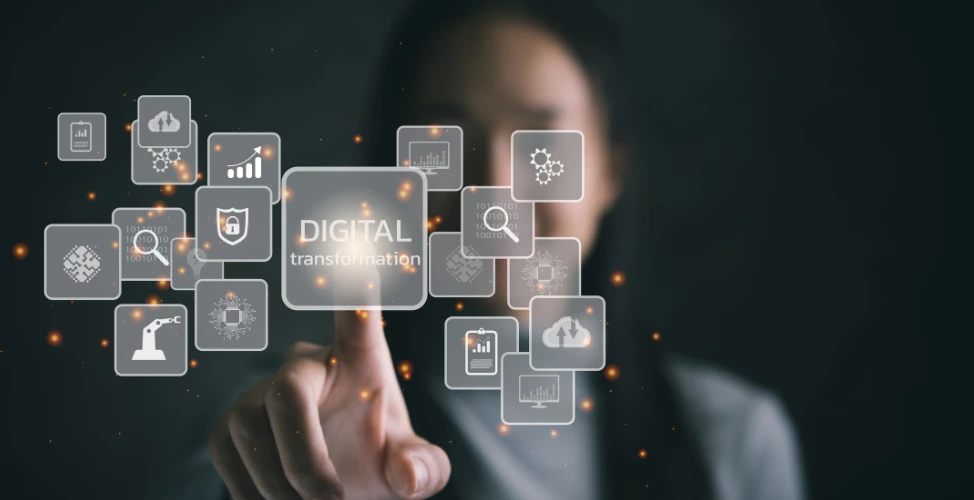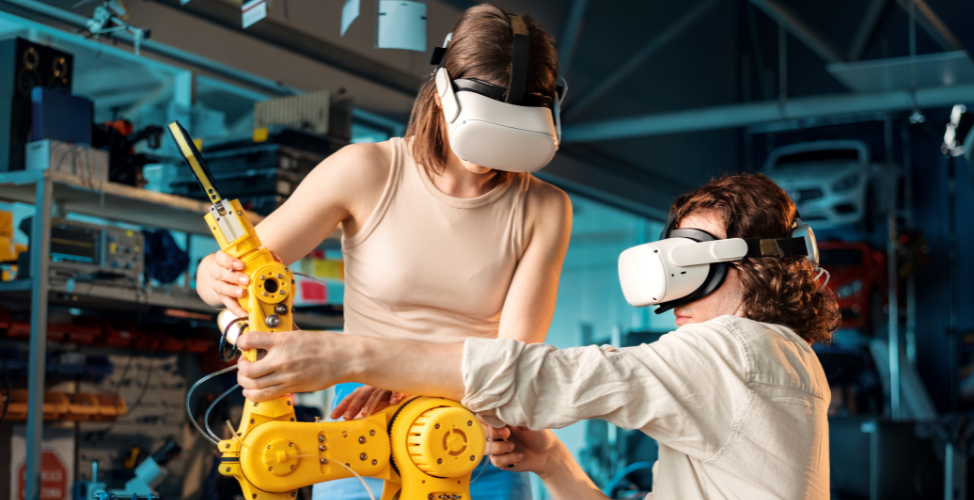How AI Digital Transformation is Driving Innovation Across Industries
AI digital transformation isn’t just a tech trend. It’s changing entire industries as we speak. From predictive health solutions to smarter assembly lines, this wave sparks new ideas every day. McKinsey once shared that half of all companies worldwide already use AI in at least one business function, and that figure rises steadily. We see AI powering better product personalization, faster data analysis, and reimagined ways of working. But how, exactly, does AI reshape industry after industry, and where might this trend head next? Let’s explore the key drivers and discover how AI shapes our reality right now.

Understanding AI Digital Transformation
AI digital transformation refers to the move toward using AI to boost core tasks, from analyzing complex data to handling daily duties. This isn’t just about fancy algorithms. It involves a shift in mindset, resources, and readiness to adapt to new technology. Leaders in many fields realize that time spent on repetitive tasks drains human creativity. Teams can focus on the big picture by turning those tasks over to AI.
AI systems learn from patterns in large sets of data. This allows them to forecast trends, uncover hidden insights, and drive more informed decisions. In health care, AI helps specialists predict disease risks. In retail, it provides real-time inventory checks that keep products on shelves without guesswork. The common thread is growth in efficiency plus new ways of serving people.
Whenever AI meets daily operations, companies must handle integration with care. That means upskilling their teams and choosing the right approach. Good planning also involves stable cloud infrastructure, security controls, and data ethics. If done well, AI becomes an engine that revamps business processes, fosters brand loyalty, and sparks new opportunities.
Why AI Digital Transformation Matters in Modern Business
Generative AI architecture is helping organizations worldwide find faster, smarter ways to stand out in competitive markets. By streamlining workflows and enhancing decision-making, AI-driven systems reduce delays and help teams respond swiftly to changing conditions. More importantly, this architecture unlocks deeper insights by identifying patterns and data points that may have gone unnoticed. For example, a grocery chain can forecast fresh food demand more accurately and minimize waste, while a bank can detect unusual transactions and alert customers to potential fraud. This is the power of generative AI architecture in action—reshaping how businesses operate and make informed decisions.
On the human side, AI tools automate mundane tasks like manual data entry. This frees employees to do more creative work such as innovating new product lines or refining customer support approaches. The end result? Gains in morale, plus a sharper competitive edge.
Besides that, consumer expectations are growing. Many folks want real-time answers, instant service, and easy online interactions. AI chatbots, for example, can handle many basic questions day or night. That helps reduce wait times and fosters trust with customers. The important point is that AI helps businesses of every size do more with fewer resources. It’s not a magic trick that solves everything, but it does propel strategic thinking and deeper customer connections.
How AI Digital Transformation Drives Innovation Across Industries
1. Healthcare
Healthcare sees promising gains from AI-driven improvements. Machine learning algorithms quickly read X-ray or MRI images, pointing out subtle issues that even an expert eye might miss. This fast, accurate analysis can help doctors make targeted decisions for patient care. Not only that, AI chat assistants answer non-urgent medical queries, guiding people to the right department or facility.
Data modeling also helps hospitals manage staff schedules based on patient flow. That reduces waiting times and helps employees handle tasks with less stress. In precision medicine, AI sifts through patient genetics and lifestyle habits to pick the most suitable treatments. This lessens trial-and-error approaches, often leading to higher success rates.
Several hospitals use AI-based robots for basic tasks, such as delivering supplies or cleaning patient areas. This doesn’t replace humans in critical roles. It frees them from basic errands so they can focus on clinical duties. In short, healthcare’s adoption of AI sees consistent upward growth. If it continues at this pace, we can expect better patient experiences and reduced operational burdens soon.
Watch more: What Does the Generative AI Ecosystem Refer To? Key Components & Insights
2. Finance
Banks and financial institutions are tapping AI to manage fraud detection, risk analysis, and customer interaction. AI can sift through huge transaction data sets in seconds, flagging suspicious activity or unusual spending patterns. That saves precious time for compliance teams, who can then investigate only high-priority alerts.
AI-based advisors also give personalized suggestions to users about saving and investing. That fosters trust because clients see recommendations tailored to their goals. Some banks even use AI to predict credit risk, relying on machine learning to gauge whether an applicant can repay a loan. This cuts down on guesswork while offering fairer lending terms.
On the corporate side, AI shortens the review of thousands of financial documents. This includes analyzing contractual details, auditing ledgers, or automating compliance checks. Risk managers once had to read through dense paperwork. Now they can focus on big-picture insights. The result is fewer manual errors, quicker turnaround, and often stronger compliance with national and global guidelines.
3. Manufacturing
Factories transform raw materials into final products, and AI keeps them moving smoothly. Predictive maintenance is a game-changer here. Sensors on machines gather data about vibration, temperature, and usage. AI then warns technicians if a part is about to break or if a machine needs calibration. This cuts downtime, limiting the risk of a major breakdown that halts production.
AI digital transformation is reshaping the manufacturing world by automating routine tasks and enhancing efficiency. AI-powered robots now take on repetitive duties like sorting items, performing quality checks, or handling precise tasks such as welding and painting. While human oversight remains crucial, workers are freed up to focus on higher-level strategic planning. Many manufacturers are also embracing digital twins—virtual models that simulate production changes before they’re physically implemented—making operations smarter, safer, and more agile.
Inventory optimization is another perk. AI evaluates real-time supply chain data so that warehouses maintain the right stock levels. That saves space and avoids costly overstock. In short, manufacturing that weaves AI into daily routines sees faster output, better quality, and less wasted effort.
4. Retail
Why is AI so popular now? One major reason is its ability to transform customer experiences—especially in retail. What used to be generic product recommendations are now hyper-personalized, thanks to AI’s ability to track browsing behavior, purchase history, and other key signals. This smart targeting not only boosts online conversions but also builds stronger customer loyalty, showing why businesses are rapidly adopting AI to stay ahead.
For brick-and-mortar stores, AI helps with real-time inventory tracking. Some retailers link sensors and cameras with AI to know exactly when shelves need restocking. Store associates then spend less time manually checking stock. Digital signage can also respond to external data, like time of day or local events, to promote relevant deals.
Online chatbots handle queries about shipping or returns so that customer service reps can focus on deeper concerns. This round-the-clock support ups customer satisfaction. Data from these interactions helps retailers see emerging trends or popular styles. They can adapt their product offerings in time to meet demand. The net effect is a more efficient retail ecosystem, one that anticipates needs instead of just reacting.
See more: Applied Generative AI for Digital Transformation: A Game-Changer for Business
5. Transportation & Logistics
AI digital transformation is revolutionizing logistics and transportation by making routing and scheduling smarter. Shipping companies and ride-hailing services now use AI-powered route optimization algorithms that consider traffic patterns, weather conditions, and road closures. This allows delivery trucks and rideshare drivers to follow the most efficient paths, cutting down on unnecessary travel. The result? Reduced fuel consumption, faster delivery times, and more sustainable operations—all driven by the power of AI digital transformation.
Predictive analytics highlight potential supply chain disruptions, like port congestion or labor strikes, so logistics managers can find alternate routes in advance. Drones and automated vehicles, though still evolving, show potential in last-mile deliveries, especially in tight urban zones. AI can decide which package shipments can go by drone or which ones need standard trucks, based on location or item size.
Fleet maintenance also benefits. Real-time sensor data tracks a vehicle’s performance. AI flags anything unusual, prompting maintenance before a problem escalates. This ensures fewer breakdowns on the road. Overall, it’s about a smarter approach to moving goods and people. That leads to on-time deliveries, happier customers, and fewer resources wasted.
How SmartOSC Helps Accelerate AI Digital Transformation
Some organizations see AI digital transformation as ‘a tough puzzle.’ They struggle with data silos, uncertain resource allocations, or difficulty unifying tech stacks. This is where SmartOSC offers real support. Through experience in real-world digital projects, SmartOSC guides businesses to shape AI-driven roadmaps that align with unique goals.
Our approach starts with thorough evaluation of current systems. Then we propose steps to embed AI into daily operations, including everything from eCommerce site optimization to cloud-based analytics. We also keep an eye on data protection, ensuring each solution follows best-practice security. If you’d like more details about these efforts, explore our digital transformation services page for deeper insights.
Besides that, we partner with platforms such as Magento and AWS to unify retail, cloud, and machine learning solutions. This synergy leads to stable performance when handling advanced AI tasks. By combining technical acumen with practical strategy, we help organizations simplify AI adoption and shorten time to results. That includes bridging offline and online channels, mapping data flows, and delivering consistent user experiences.
Conclusion
AI digital transformation touches nearly every industry, inspiring new services and updated workflows. This path can spark big rewards, yet it demands thoughtful planning plus the right mix of tech, data practices, and talent development. AI can pave fresh ground for discovery in healthcare, finance, logistics, and beyond. By starting with small steps and scaling up, businesses sidestep pitfalls. For additional help, contact us at SmartOSC to learn how we can support your journey. Drive your organization forward with AI’s potential, and let true innovation thrive.


